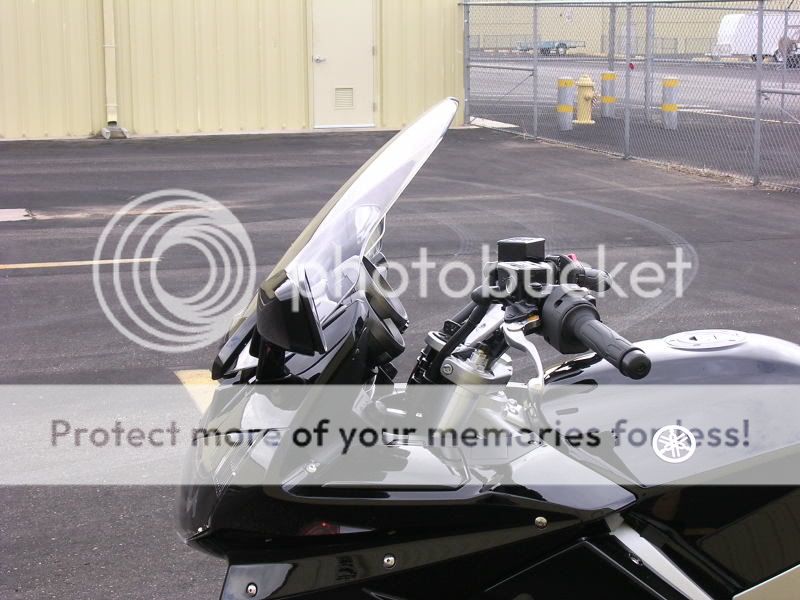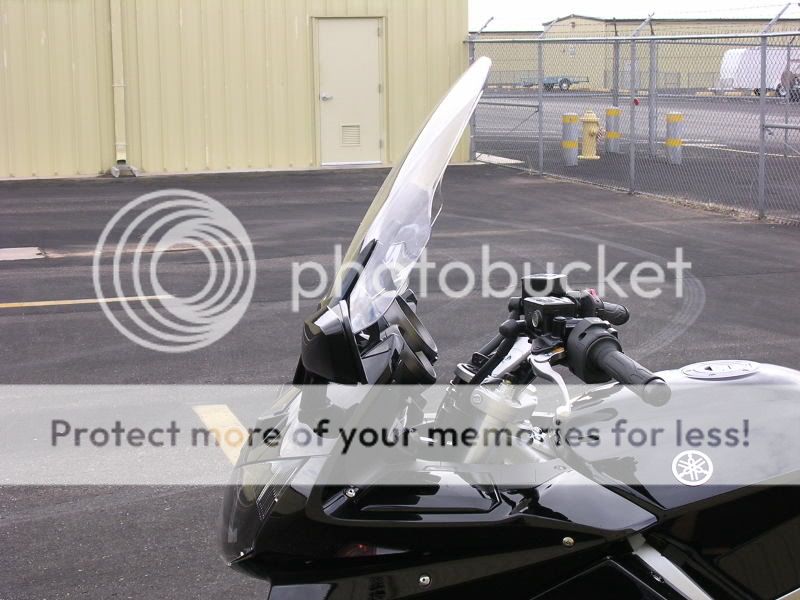I was looking at some pictures in another thread and thinking about how frustrating the whole power windshield system on the FJR has been for so many people, including me. I think the problems are pretty much the same on both generations of the bike and can be summarized as follows:
In the lowered position everything is ducky with just about any piece of plastic you might have screwed on. It's only when you try and get some additional wind protection, like at this time of the year, that the infamous buffeting begins.
Observing how the mechanism works reveals what I believe is causing all the problems. The driven part of the windshield is the lower bracket, which remains fairly close to the front surface of the faring as it drives up and down. The upper bracket is merely a strut with 2 pivot points on each end. This results in the top of the windshield tipping forward (away from the rider) as the shield is raised.
Compare the two 2008 images below, shamelessly stolen from FJRTom in another thread. In the lowered position the shield closely parallels the leading surface of the front faring nose. But then see how far forward the top of the shield tilts as the shield is raised? The windshield becoming closer to vertical is undoubtedly what causes all the turbulent air, which results in your head getting knocked all around.
The only partial solutions I have seen to date are the skyway spacers and Rifle spacers, both of which get applied to the bottom bracket. Spacing the bottom bracket out does result in the top of the shield being less vertical at the top, but not a lot. And the shield still changes angle dramatically from top to bottom. It's just starting at a bit bigger tilt to begin with.
So, thinking about the great work being done on the mirror extensions thread, how could we redesign the upper bracket so that it allows the shield to move up but not tilt forward so much, if at all?
What I'm envisioning would be ideal is some sort of sliding affair so the shield stays at the "perfect angle", and just slides up and down in some sort of tracks.
An alternate idea would be to move the bottom pivot point of the upper strut lower (and possibly also use shorter struts) so that as the shield was raised it would still initially tilt forward some, but then would go "over center" and start to tilt back toward the rider again up at the top where all the bad buffeting occurs. I'm thinking this might be the easier path to retrofit to the existing design.
I suppose that before a design or prototype of any sort of changes to the brackets, it might make sense to see if my premise is correct, i.e. that when the shield is tipped back to the shallower attack angle that it's at when lowered now, that it works well when raised. Should figure out some way to disconnect it from the upper brackets and hold it temporarily at the shallower angle while in the raised position without damaging the windshield or the bike.
Any thoughts on this?

































































